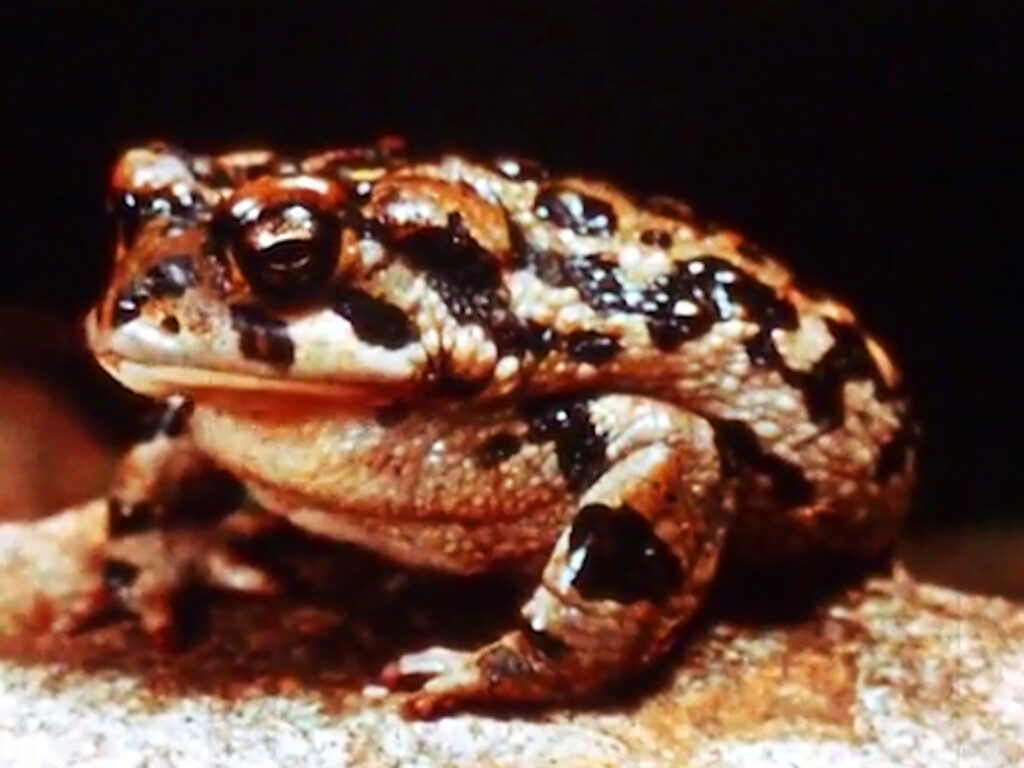Below, we publish a few questions addressed to director G. Anthony Svatek about his competition film Some Thoughts on the Common Toad.
Archivio Aperto explores the theme of memory and archives. How does your film intercept this theme? What elements of the film highlight this exploration of memory?
Some Thoughts on the Common Toad is based on George Orwell’s 1946 essay of the same name. Orwell celebrates spring as an allegory for the UK rising from the rubble of World War II. The emergence of the common toad, an amphibian “hardly beloved by poets,” serves as a reminder that loving nature “under the shackles of the capitalist system” is a radical and political act, transcending class and social structures. This idea, while written almost 80 years ago, feels evermore relevant today; nature has become an increasingly mediated and abstract experience, radiating through digital screens or confined to artificial sanctuaries. In the film, nature itself has become a distant memory, as images of today’s wars and environmental destruction echo from our era into Orwell’s and vice-versa. The toad’s croaking sound has the power to remind us of this cycle of history.
How do archive images influence the construction of the narrative? Can you tell us about a sequence in your film where archive images transformed or enriched the message you intended to communicate?
Despite Tilda Swinton’s participation, resources for Toad were limited and I had three weeks to make the film from conception to final delivery. From early on, producers Lucy Taylor, Aaron Hicklin, sound designer Kaija Siirala, and I relied on found materials. I started by making an extensive list of imagery and ideas conveyed in the Orwell essay. More importantly, the selection was based on materials labeled under Creative Commons, a U.S. law that allows for specific use of copyrighted materials under certain conditions. I took due diligence whenever I could, and for material whose status I wasn’t 100% certain about, I took creative interventions such as collaging and layering to transform the original material. This also served as the seamless mending of ideas and concepts that Orwell explores in the text. Conceptually, the edit moves in and out of literal and figurative illustration, careful not to overwhelm the viewer in a sea of images and distract from the reading. Despite the essay’s contemporary relevance, I did not agree with Orwell’s final optimistic conclusion – that the powerful cannot take away spring or change the course of nature’s cycles. This may have been true in 1946, but not in our time of hyper-capitalist climate-disruption. I countered this notion in my use of footage in the film’s final moment – a male hand violently squeezing a live toad to the brink of death.
What found footage or experimental films have played an important role in your education?
Joseph Cornell’s By Night with Torches and Spears and Bruce Conner’s A Movie were the first American avant-garde found-footage films I saw and I keep returning to for encouragement to de-link image from intention. I have an ancillary 2D analog collage practice, using old textbooks and magazines. Artist Janie Geiser’s eclectic films perfectly encapsulates this romantic and tactile sensibility that I find extremely comforting and liberating. Similarly, I find much inspiration from filmmaker Michael Robinson and his masterful use of digitally sourced footage (particularly “Onward Lossless Follows”). These artists, along with many others, influenced the conceptual approach to my 2018 essay film “.TV” about the climate-threatened island nation Tuvalu and its profitable domain extension. I never visited Tuvalu myself, and instead sourced the materials from unedited YouTube clips, uploaded by a globe-trotting French tourist. Though I didn’t set out to make a found-footage film, this initiated my strong interest in exploring nature depictions in an image-saturated world and its relationship to ecological crises.
